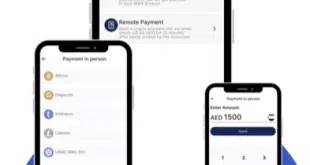As long as consumers have good reason to believe that they will have their privacy infringed, it will be impossible for politicians to introduce a cashless society.
It doesn’t take a crystal ball to know that in the coming years, digital transformation will continue to make shopping more convenient. And with that shopping convenience comes increased demand for payment convenience, as well.
For example, the Internet of Things (IoT) is fast becoming a reality. Small and large devices will process payments for us. It’s not hard to envision that our cars will automatically pay for fuel and parking fees, our smart watches will pay for taxis, and our smart phones will prove to be a universal tool to buy and pay everywhere.
Given this, payment will have to become a silent, smooth, and automatic process. And only payment methods that support silent, smooth, and automatic procedures will have a future.
So, what does this mean for the payments space in the coming years? Here are some thoughts:
Known Brands With Consumer Trust Will Continue To Be Key
The world won’t necessarily need new payment methods. Rather, we’ll need established payment brands that consumers already trust. How does someone want their car to pay for gas? Credit card, PayPal, or their company’s fleet card? Handing that process over to a device will be a big change in consumer behavior. New payment brands with no history, no established trust, would keep consumers from embracing this change and would slow the process down. Established brands will make the decision easier.
E-Wallets And Bank Transfers Will Play an Essential Role
E-wallets like AliPay, Masterpass, PayPal, and WeChat will become invaluable in the future. Wallets will process payments online, in-app, and in-store via near-field communication or quick-response code.
However, there is also a rather old-fashioned payment method that will soon regain mainstream popularity: bank payments/transfers. With the opening to third-party processors via application programming interfaces, the traditional bank-transfer payment gets empowered by dynamic fintechs and can thereby provide state-of-the-art convenience to the customer. This will continue to be the case in the future.
We are starting to see evidence of the rising popularity of bank accounts for payments due to the introduction of faster payments in the U.S. and U.K. and instant payments in Europe. These systems make it much faster, easier, and more convenient for consumers to send money from account to account.
Historically, in Europe, with 28 member states and just as many banking systems, it had been difficult, expensive, and slow to transmit money between countries. However, with SEPA Instant Payments announced for 2018, it will be easy and cost-effective to send money to any European account within 10 seconds, 365 days per year.
Current Solutions And Technology Will Maintain Their Importance
Existing payment methods like cards, e-wallets, and bank transfers need technology to underpin the payment process. Automatic processing requires many features that only a few payment systems support. Among such systems, credit cards and e-wallets are the most flexible and powerful.
Merchants can first reserve a certain amount of money on a card, and, if necessary, that authorization can be increased. For instance, if a hotel guest decides to keep his room another day, or if a merchant could only deliver its goods with partial deliveries, credit cards and some e-wallets allow partial captures of the money.
That’s the moment when money flows from consumers to the merchant. In the case of returns, partial refunds are another important feature.
Doing all of this automatically, worldwide, and on all sales channels is a tough requirement that very few payment solutions currently can address. This will be an area of continued focus for businesses in this space.
Biometrics Will See Increased Adoption
As mentioned, established brands, global reach, and payment schemes that allow convenient and automatic processing will undoubtedly make payments popular with consumers. And popularity usually leads to an increase in trust, conversions, and turnover for both merchants and the payment industry.
What is the next step? Biometrics. In the near future, we’ll see user names and passwords replaced with biometric authentication like fingerprint, face, and voice recognition.
Biometric technology is evolving all the time. It’s becoming faster, more secure, and more reliable. We can’t forget a fingerprint, and we won’t have to type in complex passwords on small touch screens any more. That’s a compelling offer for consumers. Payment schemes that allow biometric authentication will be popular and successful.
Are Cash’s Days Numbered?
While digital payments, with all their convenience, will surely continue to grow in popularity, cash is by no means dead. This form of payment is very popular in locations where people distrust their banks and governments.
Electronic payments require trust in data privacy because consumers can be tracked. Many Germans and Italians, for example, place more trust in cash than they do in banks or in governments, which they don’t feel will treat their data privacy properly. As long as consumers have good reason to believe that they will have their privacy infringed, it will be impossible for politicians to introduce a cashless society. Trust will continue to come first.
In Closing
In the future, the payment industry needs to focus on enhancing current payment methods rather than on inventing new ones, and leveraging solutions that consumers trust. Apple Pay, Samsung Pay, and Pay with Google are all examples of how to build a better service with cards as an existing payment scheme. Most of today’s large payment schemes will prevail—while many new ones won’t.
—Ralf Gladis is chief executive of Computop, Bamberg, Germany.




